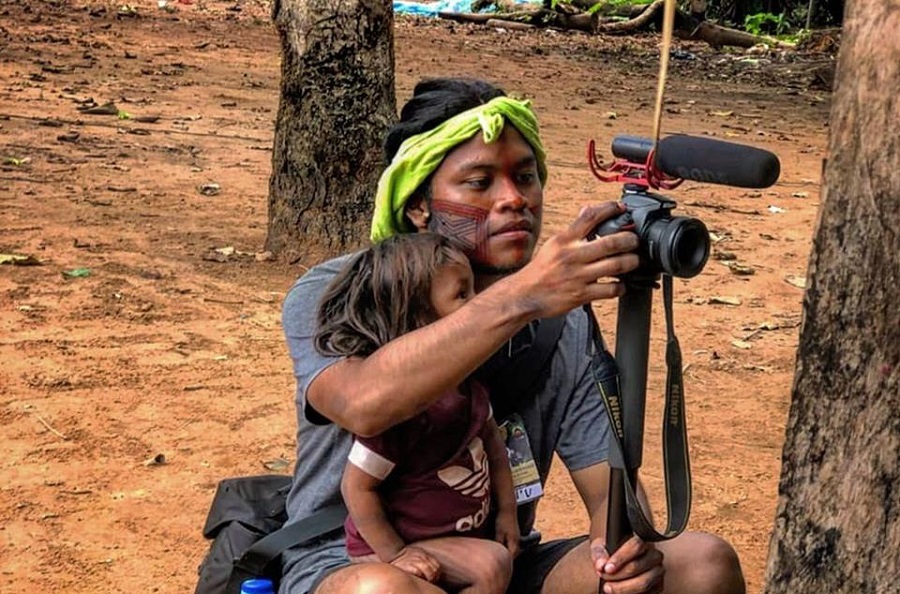RIO DE JANEIRO, BRAZIL – “What, you have internet?” the host asked influencer Alice Pataxó, 19, of YouTube children’s channel “Canal IN”. Pataxó answered from her home in Monte Pascoal nature reserve village in southern Bahia state, about 40 kilometers from the nearest supermarket. “We don’t have a phone, but the satellite internet is stable,” she explains.
Part of her work as an indigenous activist is to declare that it is not a contradiction that her people live off what they have grown and use the internet. That her school lessons took place, in part, in the forest and that she is now studying at the Federal University of Bahia Sul.

But Alice Pataxó does not always speak as calmly and kindly as in the children’s program. On her own social media channels, she seems more combative and also more annoyed by the clichés that shock her time and again: her skin is too light for an indigenous woman; her traditional headdress and face paint are just a mask.
In one of her most recent tweets, she asked, “Who are the Brazilian indigenous peoples?” She herself answered: “being indigenous has to do with tradition, but not with backwardness. Identity results from the feeling of belonging and the eternal struggle against colonization.” To this day, she says, Brazilian society wants to take away everything that defines indigenous peoples – from territory to identity: “If we don’t live in complete isolation, we are supposedly not indigenous. That’s a colonial way of thinking that we fight against every day,” she alleges.
Used to fighting
At the age of 15, she and her family camped for a while on the side of a road because their village had been cleared by the police. The area was the subject of real estate speculation. But the struggle for survival made her strong: “If I ever feel that I can’t do something, I remind myself that I have already survived worse,” she says. “What I do, I do so that other indigenous children don’t have to experience it,” she clarifies.
She has around 150,000 followers in total between Twitter and Instagram, including some Brazilian celebrities such as singer Emicida, humorist Marcelo Adnet and politician Marina da Silva.
Rituals help to withstand prejudice
Cristian Wariu Tseremey’wa has many followers on Instagram. His YouTube channel has 33,000 subscribers. Cristian Wariu is from the Xavante village in central Brazil. He also has Guarani ancestors living further south.
As the only indigenous person in school, he faced much prejudice, also from teachers. At the time, he would never have dared to flirt with using typical indigenous features, such as thick, straight black hair, as he does today in an Instagram video, although the same clichés now haunt him on social media.
Proud of indigenous origins
“If there’s room to debate, I go in, but I also have no problem tuning out when it doesn’t make sense,” says the 22-year-old. “Xavante rituals involve a lot of testing, both physical and psychological,” he explains. “Sooner or later life plays a trick on you and you have to learn to endure it,” he says.
He has set himself the task of spreading knowledge about the Xavante and other indigenous peoples to break down clichés: “My parents taught me to be proud of my origins,” says the son of one of the tribal leaders. “We can strengthen our identity and our self-confidence through the internet,” he assures. Cristian Wariu studied Communication and Organization in Brasilia. The computer skills, editing, etc., he learned on his own.
Although their goals are similar, the approaches of both “influencers” differ. Alice Pataxó presents herself as a young activist, her Twitter posts are politically charged, her comments are sharp, the aesthetics of the image seems adjusted to her femininity.
Cristian Wariu, on the other hand, appears in front of the camera wearing a T-shirt. He explains the world of the indigenous people with great calm and kindness. Both have the support of their people.
Source: DW

